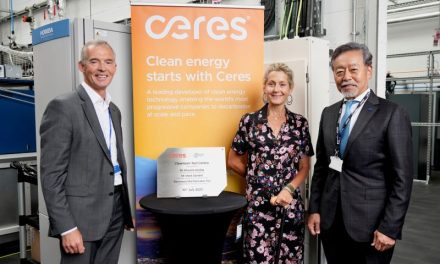 A third of all lenders to renewable energy project crowdfunds are over 61-years old, according to Trillion Fund, the clean energy crowdfunding platform.
A third of all lenders to renewable energy project crowdfunds are over 61-years old, according to Trillion Fund, the clean energy crowdfunding platform.
An analysis of more than 300 lenders that have so far participated in loans to wind projects on the website revealed that 32% of those lending are in or close to retirement, suggesting that despite its young image, crowdfunding might appeal more to a silver crowd.
The analysis also shows that small- and medium-scale wind is being recognised by a growing audience as a valuable investment.
Through the E2 and E5 peer-to-peer raises, Trillion Fund, Endurance Wind Power, one of the UK’s biggest turbine manufacturers, and Earthmill, an installer, are giving investors a strong rate of return while also helping the UK to meet its clean energy goals.
The silver crowd is responsible for putting the most money into these crowdfunds on the site. Almost half (49%) of all funds raised come from this age group, although this is perhaps less surprising, given they have typically accumulated more in savings and investments than younger generations.
Older lenders are also more likely to invest higher sums. The average investment among the over 61s across two raises is £7,017.52, compared with £2,625 for younger lenders.
The E5 Energy raise, which offers seven per cent until April 30th on amounts over £50, has raised £1m to date of a £2.5m target. So far, 34% of these lenders are over 61, contributing 54% of the total raised.
Julia Groves, chief executive of Trillion Fund, said: “You might expect crowdfunding to be the investment choice of a younger generation. But our research suggests that the silver pound, ever on the hunt for higher risk-adjusted returns than are available from traditional institutions, have ended up becoming the unlikely champions of crowd lending.
“Unlike equity crowdfunding, which is usually high risk, crowd lending is often lower down the risk curve, making it potentially palatable for even more cautious investors who are looking to diversify some of their investments.
“Peer-to-peer loans to renewable energy also offer alternative income, making them particularly attractive to older people who prefer income-based returns, rather than capital growth. We anticipate that new pension freedoms, allowing older people more choice, will mean more start to examine the merits of renewable energy.
“Wind and solar projects may also appeal to this demographic because they are tangible assets, producing something real and making revenue in an easily understandable way. We are finding that more and more older people are prepared to accept greater risk than they would face with a savings account for the potential higher returns from asset-backed lending to projects.”
Brett Pingree, vice president of commercial at Endurance Wind Power, said: “Our aim with the first raise was to open up access to renewable energy for everyday savers and investors, which we achieved. With this raise we’re seeing even more attention from ‘silver surfers’ looking for new ways to supplement their pensions.”
“Wind projects have some unique characteristics that make them a particularly suitable asset class for generating a steady retirement income, especially since the subsidy-based portion of the returns are fixed for 20 years.”
The research also found that 34% of lenders across both raises were female.
Trillion Fund, which is authorised and regulated by the Financial Conduct Authority, has raised £2.5m for clean energy projects in the last 10 months.
The group’s first raise, E2 Energy, a £1.25m loan secured against operational wind turbines and used to build five more, was over-subscribed and closed six weeks early in August last year. 28% of investors in this raise were over 61, contributing 46% of the investment total.
The second raise will be secured against a maximum of 10 operational wind turbines located across the UK that are owned by E5 Energy, a venture set up by Endurance Wind Power, a manufacturer of small and mid-size wind turbines.
Known as “small-scale”, “distributed” or “farm” wind, these turbines do not form part of a large wind farm, but instead are single installations in rural locations up and down the country that power a single site, such as a farm or business park, enabling local businesses to thrive.
Unlike developer-owned, large scale wind farms, the initiatives means that local communities are able to reap financial rewards from small, single turbines, and are supporting local businesses in the process.
The turbines are operated and maintained by Earthmill, one of the UK’s biggest installers. The turbines generate revenue from index-linked Feed-in Tariffs and the sale of electricity to the National Grid.
While there are a number of return investors for E5, so far the largest proportion of the investor mix is new, as more people than ever wake up to wind energy as a savvy investment.



